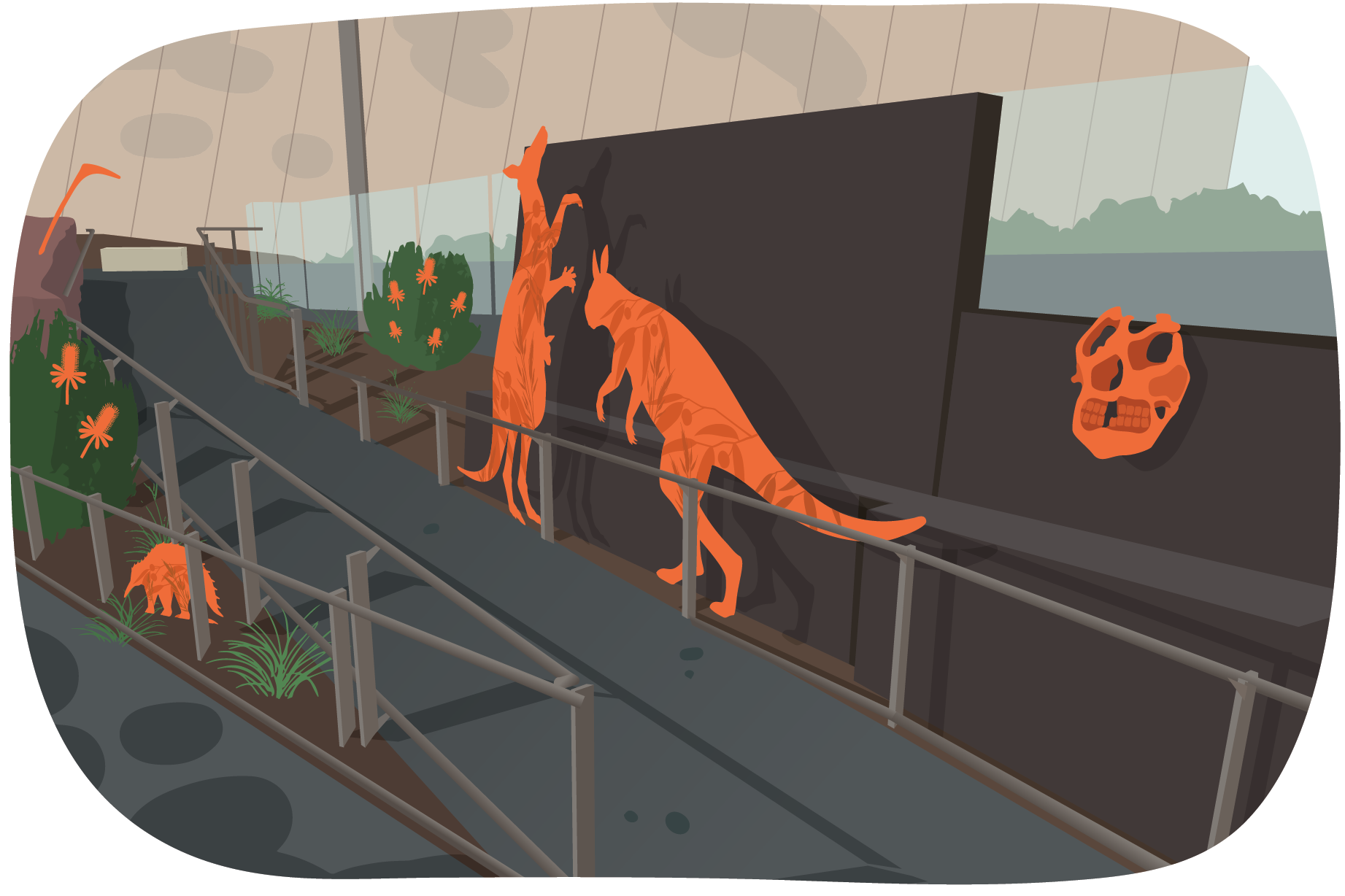Walking kangaroo
Procoptodon might look similar to a kangaroo, but it did not hop. By studying fossilised footprints, palaeontologists have figured out it was a striding kangaroo.
Image and interpretation provided by Aaron B. Camens
Procoptodon skull
Giant kangaroo
Banksia
Many of Australia’s Banksias have woody cones that protect seeds and release them only after a fire or exposure to smoke. First People make a sweet drink by soaking Banksia flowers, while the dry cones are useful as strainers or fire carriers and the wood can be used to make implements.
Liangle
The Liangle is a weapon used by First Peoples of Australia for hunting and combat. The word Liangle is from the language of the Gunditjmara peoples. Although it looks like a boomerang, the Liangle is not designed to return, but can bring down a large animal like a Kangaroo.













